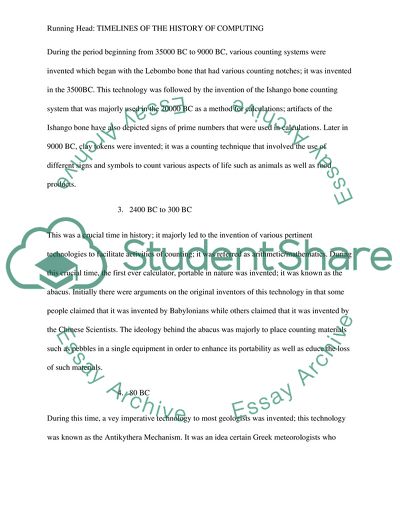Cite this document
(History of Computing Essay Example | Topics and Well Written Essays - 1750 words, n.d.)
History of Computing Essay Example | Topics and Well Written Essays - 1750 words. https://studentshare.org/information-technology/1798091-assignment-12
History of Computing Essay Example | Topics and Well Written Essays - 1750 words. https://studentshare.org/information-technology/1798091-assignment-12
(History of Computing Essay Example | Topics and Well Written Essays - 1750 Words)
History of Computing Essay Example | Topics and Well Written Essays - 1750 Words. https://studentshare.org/information-technology/1798091-assignment-12.
History of Computing Essay Example | Topics and Well Written Essays - 1750 Words. https://studentshare.org/information-technology/1798091-assignment-12.
“History of Computing Essay Example | Topics and Well Written Essays - 1750 Words”. https://studentshare.org/information-technology/1798091-assignment-12.


